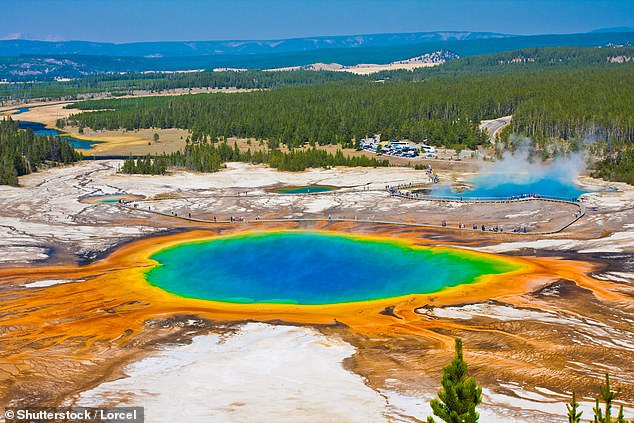
New Seismic Data Reveals Alarming Clues in Yellowstone Supervolcano’s Potential Eruption Activity
Scientists Uncover Hidden Earthquake Swarms at Yellowstone Using AI
A recent study using machine learning has detected over 86,000 previously hidden earthquakes beneath Yellowstone National Park between 2008 and 2022—ten times more than previously recorded. These findings, published by researchers at Western University, raise questions about the supervolcano’s activity, though experts caution against alarm.
Earthquake Swarms and Volcanic Activity
Over half of the 86,000 quakes occurred in “swarms”—clusters of small, interconnected tremors shifting rapidly across a localized area. While swarms can precede volcanic eruptions (as seen in recent Icelandic events), Yellowstone’s activity likely stems from geothermal fluids, not rising magma.
Yellowstone’s caldera, a 30×45-mile depression formed 640,000 years ago, sits atop a massive magma reservoir. Manual analysis of seismic data often misses smaller quakes, but AI efficiently identified patterns in decades of recordings. Dr. Bing Li, co-author of the study, emphasized, “If we had to do it manually… you couldn’t do it. It’s not scalable.”
Causes and Implications
The swarms were traced to rough, young fault lines deep beneath the caldera, where superheated water and gases force through rock, lubricating faults and triggering slips. These movements are part of Yellowstone’s dynamic hydrothermal system, responsible for iconic geysers like Old Faithful. However, intense pressure can also lead to steam-driven explosions.
In 2025, a hydrothermal blast at Biscuit Basin hurled rocks hundreds of feet, illustrating such risks. A new thermal pool at Norris Geyser Basin, formed between late 2024 and early 2025, further highlights ongoing geothermal shifts.
No Catastrophic Eruption Expected
Experts clarify that current swarms do not indicate an imminent supereruption. Uppsala University volcanologist Valentin Troll explains, “The seismicity is confined to the volcano’s interior… no direct evidence of magma recharge.” Instead, Yellowstone’s unrest involves shallow fluid movements, which occasionally cause localized hydrothermal eruptions.
A Yellowstone supereruption would blanket the U.S. in ash, disrupt climate patterns, and devastate ecosystems. Yet, the U.S. Geological Survey estimates a 1-in-730,000 annual chance of such an event.
Future Monitoring and Safety
The study underscores AI’s potential in volcanic monitoring. By analyzing historical data, researchers aim to decode “Earth’s volcanic heartbeat” globally. Li notes, “Understanding earthquake swarms can improve safety measures and guide geothermal energy projects away from hazards.”
Visualizing the Data
- Yellowstone Caldera: Aerial views highlight the vast volcanic depression.
- Earthquake Graphs: Maps and charts show swarm locations, depths, and fault movements.
- Hydrothermal Activity: Images of Biscuit Basin’s 2025 explosion and Norris Geyser Basin’s new thermal pool illustrate ongoing geothermal processes.
While Yellowstone’s seismic activity demands vigilance, the study reassures that machine learning offers critical tools for early warnings—turning raw data into actionable insights without stoking unnecessary fear.


